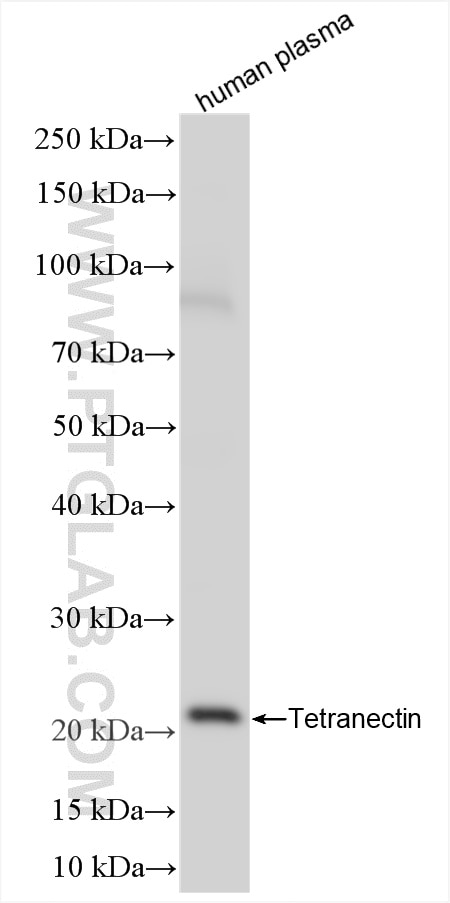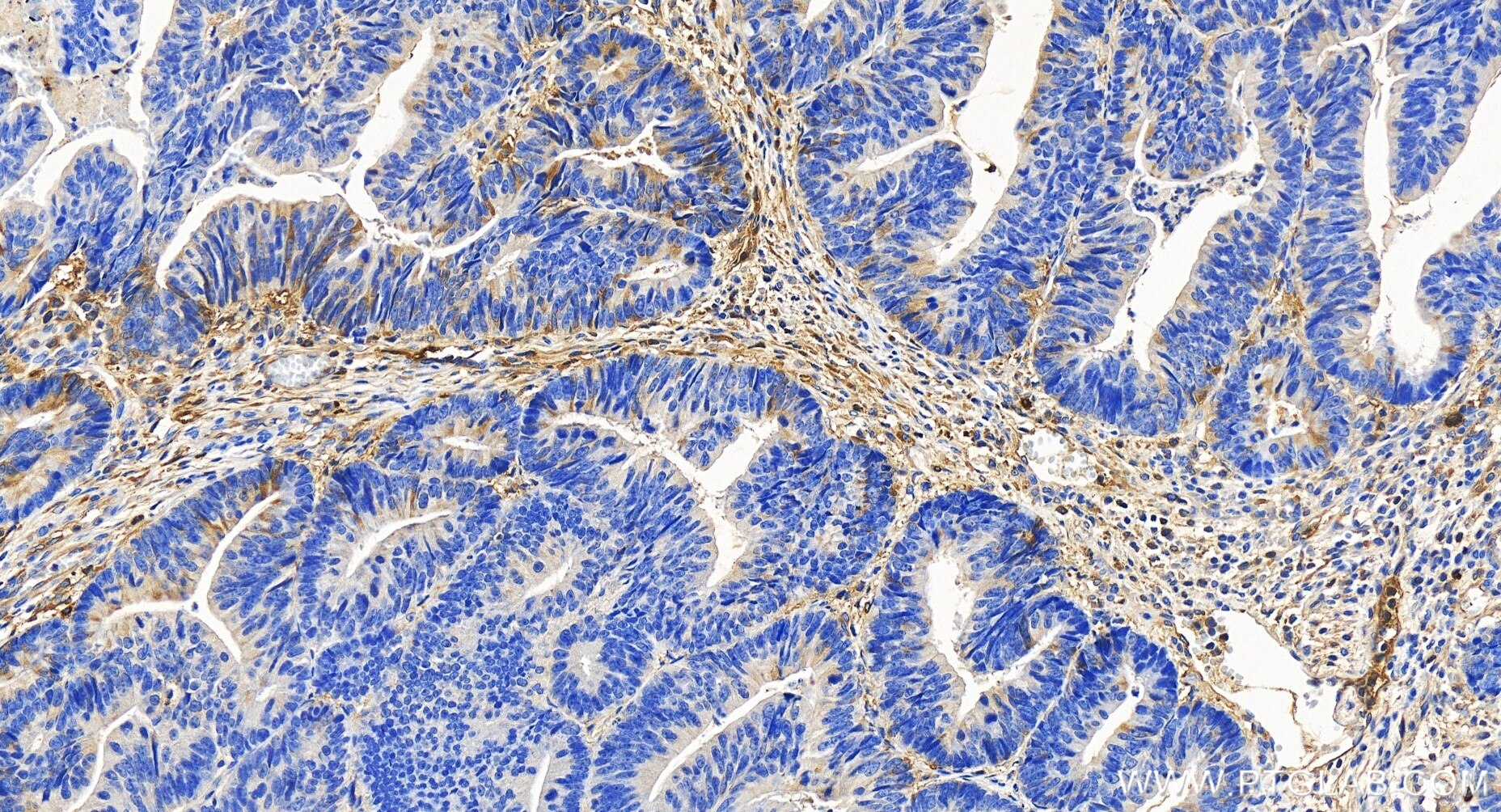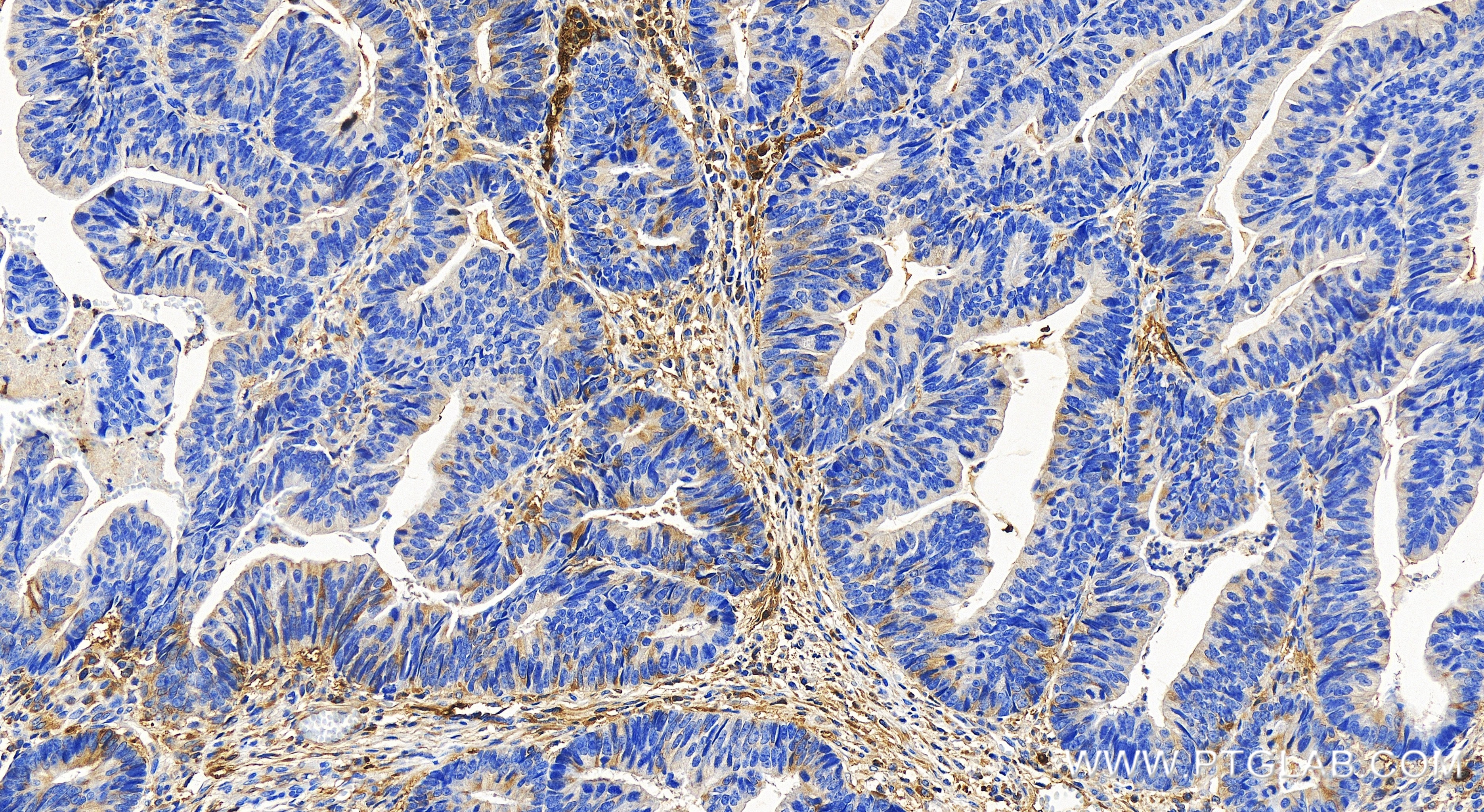Tested Applications
| Positive WB detected in | human plasma |
| Positive IHC detected in | human colon cancer tissue Note: suggested antigen retrieval with TE buffer pH 9.0; (*) Alternatively, antigen retrieval may be performed with citrate buffer pH 6.0 |
Recommended dilution
| Application | Dilution |
|---|---|
| Western Blot (WB) | WB : 1:5000-1:50000 |
| Immunohistochemistry (IHC) | IHC : 1:250-1:1000 |
| It is recommended that this reagent should be titrated in each testing system to obtain optimal results. | |
| Sample-dependent, Check data in validation data gallery. | |
Product Information
85689-5-RR targets Tetranectin in WB, IHC, ELISA applications and shows reactivity with human samples.
| Tested Reactivity | human |
| Host / Isotype | Rabbit / IgG |
| Class | Recombinant |
| Type | Antibody |
| Immunogen |
CatNo: Eg3063 Product name: Recombinant Human CLEC3B protein (rFc Tag) Source: mammalian cells-derived, V37 Tag: C-rFc Domain: 22-202 aa of NM_003278.2 Sequence: EPPTQKPKKIVNAKKDVVNTKMFEELKSRLDTLAQEVALLKEQQALQTVCLKGTKVHMKCFLAFTQTKTFHEASEDCISRGGTLGTPQTGSENDALYEYLRQSVGNEAEIWLGLNDMAAEGTWVDMTGARIAYKNWETEITAQPDGGKTENCAVLSGAANGKWFDKRCRDQLPYICQFGIV Predict reactive species |
| Full Name | C-type lectin domain family 3, member B |
| Calculated Molecular Weight | 23 kDa |
| Observed Molecular Weight | 22 kDa |
| GenBank Accession Number | NM_003278.2 |
| Gene Symbol | CLEC3B |
| Gene ID (NCBI) | 7123 |
| Conjugate | Unconjugated |
| Form | Liquid |
| Purification Method | Protein A purification |
| UNIPROT ID | P05452 |
| Storage Buffer | PBS with 0.02% sodium azide and 50% glycerol, pH 7.3. |
| Storage Conditions | Store at -20°C. Stable for one year after shipment. Aliquoting is unnecessary for -20oC storage. 20ul sizes contain 0.1% BSA. |
Background Information
C-Type Lectin Domain Family 3 Member B (CLEC3B) is a transmembrane Ca2+-binding protein, locating in cell plasma, extracellular matrix and exosomes. Downregulation of CLEC3B has been reported in various diseases. It was demonstrated in CLEC3B-deficient mice that the absence of CLEC3B impeded the mineralization process in osteogenesis. (PMID: 31477130)
Protocols
| Product Specific Protocols | |
|---|---|
| IHC protocol for Tetranectin antibody 85689-5-RR | Download protocol |
| WB protocol for Tetranectin antibody 85689-5-RR | Download protocol |
| Standard Protocols | |
|---|---|
| Click here to view our Standard Protocols |








